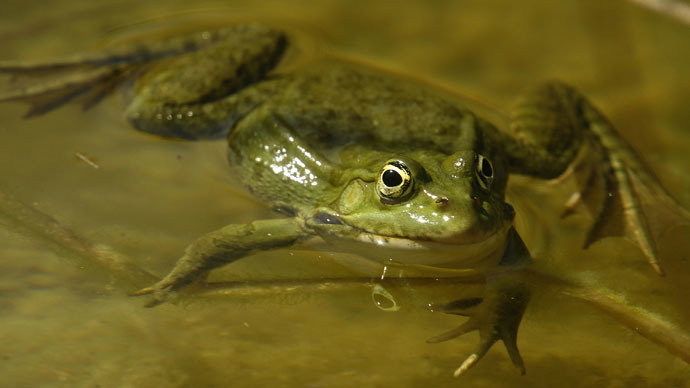Two new reports argue that human activity is contributing to the increasing threat facing the planet’s animals. In fact, one in six species may go extinct due to unchecked carbon emissions and our activity in Earth’s airspace.
The reports were published in Science this month and are being released as the world’s political leaders are preparing for the UN climate talks in Paris this December, when a new climate treaty will be negotiated.
The author for the first report, titled: ‘Accelerating Extinction Risk from Climate Change,’ synthesized 130 published studies of numerous species “to estimate a global mean extinction rate” and analyze “which factors contributed the greatest uncertainty to climate change-induced extinction risks.”
READ MORE: 'Animals rights' police to be set up in Norway
The study found extinction is accelerating with the rise in global temperatures, a development that could threaten “up to one in six species under current policies.” The highest-risk areas are South America, Australia and New Zealand, where climate change could potentially decimate 14 to 23 percent of many species. The lowest-risks areas are North America and Europe.
“Global extinction risks increase from 2.8 percent at present to 5.2 percent at the international policy target of a 2°Celsius post-industrial rise, which most experts believe is no longer achievable,” wrote Mark Urban, an ecologist at the University of Connecticut and author of the study. “If the Earth warms to 3°Celsius, the extinction risk rises to 8.5%. If we follow our current, business-as-usual trajectory [4.3°C rise], climate change threatens one in six species (or 16 percent).”
The study said the species hardest hit will be those with smaller habitat ranges, such as amphibians and reptiles that need specific types of environments to survive. It estimates a 6 percent greater extinction risk for these animals than those with larger ranges.
Urban points out in the report that despite the thousands of published studies, there are many questions unanswered, such as how extinction is measured. Does it occur when a species declines to a point where they are committed to extinction but not yet extinct? Does it occur when the loss of habit is too great? Will there be variables depending on how the species reproduces and its initial population size?
A warming planet could kill 16 percent of the world's animal species http://t.co/tlEwKdPEeIpic.twitter.com/5Xh5LgUjGc
— CityLab (@CityLab) May 1, 2015
Many of the models, Urban said, ignore factors that could prove important in determining future extinction risks, “such as species interactions, dispersal differences, and evolution.”
The second study, “Human-wildlife conflicts in a crowded airspace,” looked at the effect of human activity in airspace. Using the same method as Urban, researchers compiled results from previously published work and found that buildings, wind farms, power lines and antennas threaten billions of animals each year and cause millions of deaths.
READ MORE: Earth is halfway to being inhospitable to life, scientist says
"It was only as recently as 2013 that researchers proposed that the airspace be recognized as habitat," said Emily Shepard, a bioscientist at Swansea University in the UK and a co-author of the airspace study, according to The Verge. "We are drawing attention to the importance of the airspace, in terms of all the organisms that depend on it and the services they provide."
Human construction leads animals to crash into windows and planes, or forces them to alter their migration patterns. People have also died as a result of clashes with animals: Aircraft collisions have led to the death of 200 people, said researchers.
Shepard said collision rates are increasing with the use of drones but solutions are also being proffered. New York City just this week announced that it would join other cities in the US and turn off lights when songbirds migrate. Less popular remedies include culling programs some cities have introduced to reduce geese populations.

